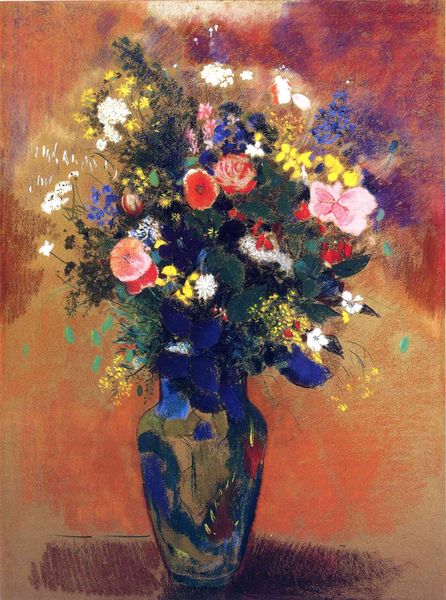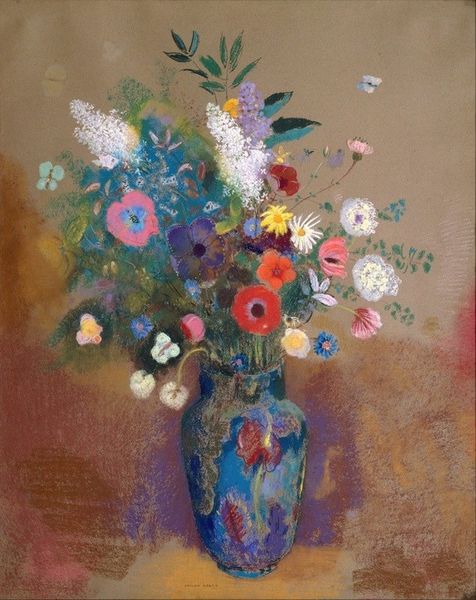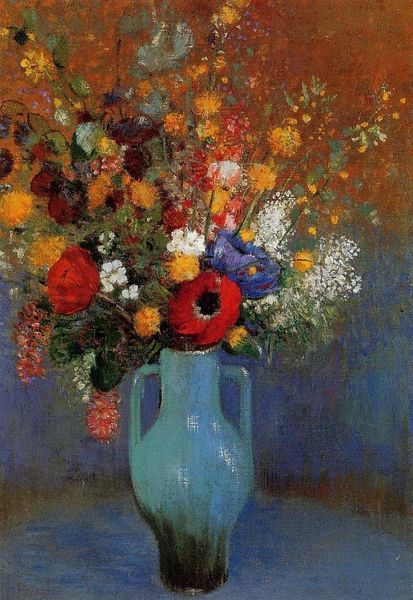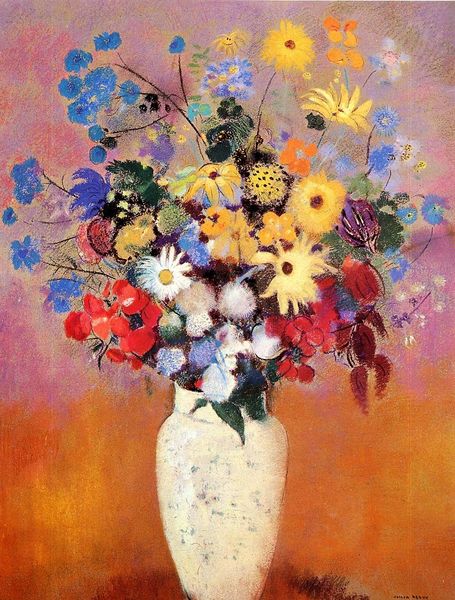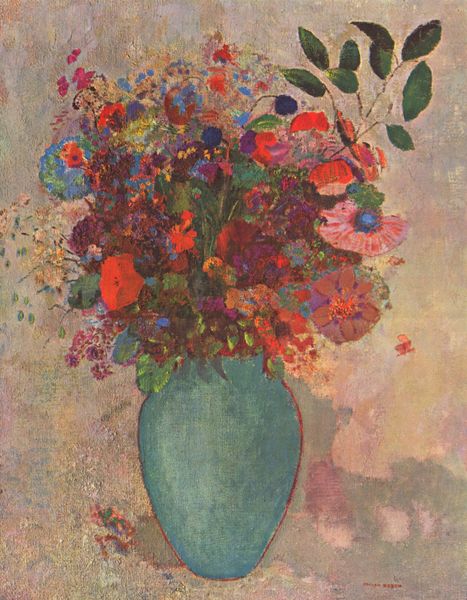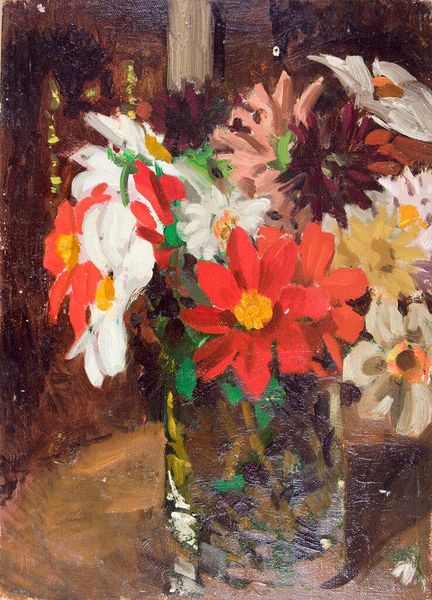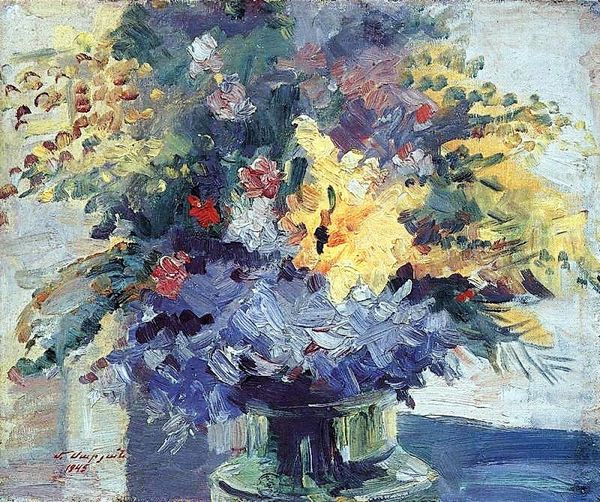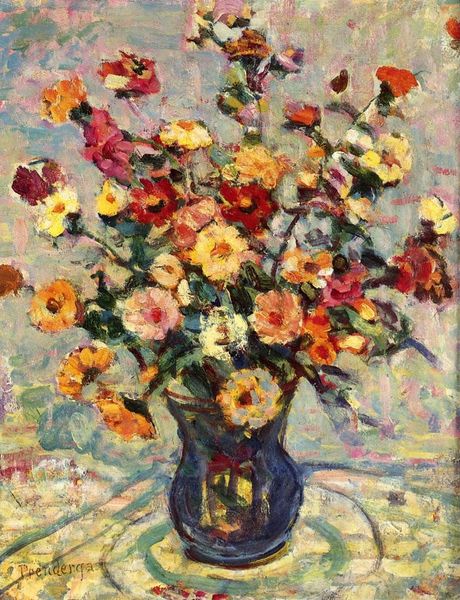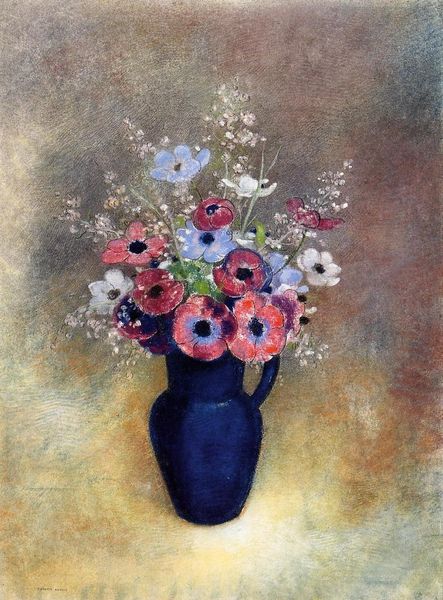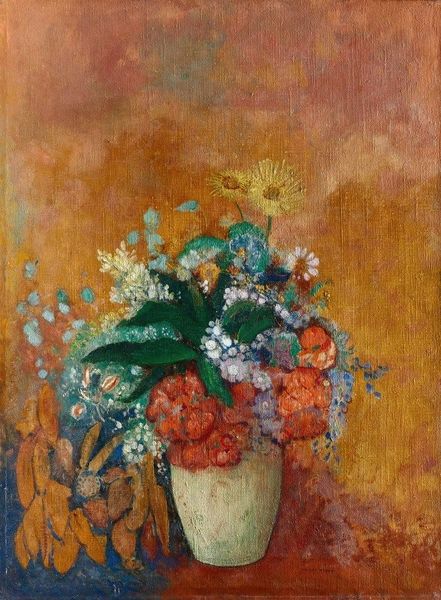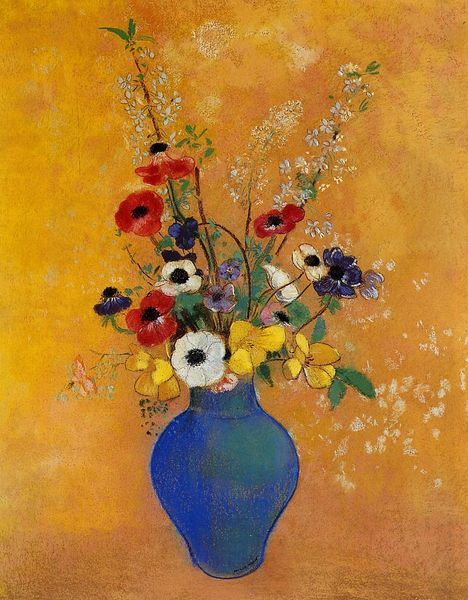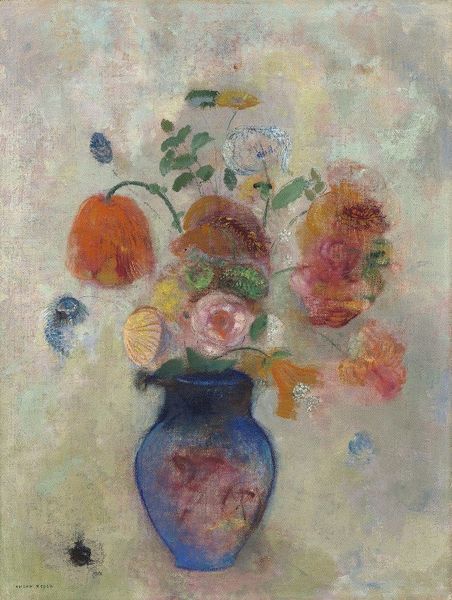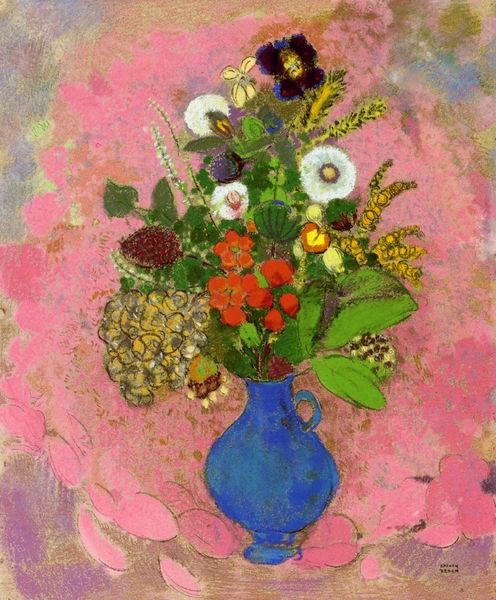
Dimensions: 50 x 65 cm
Copyright: Public domain
Editor: This is "Flowers in a Turquoise Vase," painted by Odilon Redon around 1912. It’s an oil painting, and it feels incredibly vibrant, almost dreamlike in its colour palette. What do you see in this piece? Curator: It’s a seemingly simple still life, yes, but consider Redon's Symbolist leanings and the broader societal shifts of the era. The vibrant flowers, escaping the constraints of a traditional bourgeois interior represented by the vase, speak to the era's questioning of established norms. Do you notice how the turquoise vase, in its almost artificial colour, creates a tension with the naturalism we expect from floral paintings? Editor: I hadn't really thought about the artifice of the colours, but now that you mention it, the turquoise does seem very deliberate. It doesn’t feel natural. Curator: Exactly! And how might this tension – this break from the expected – reflect the period's emerging anxieties and its changing gender roles? The vase could represent the domestic sphere, which women of the time were striving to redefine, breaking free from the restrictive societal norms imposed on them, flourishing beyond its bounds. Editor: So, the overflowing flowers, then, represent a sort of liberation? A challenging of boundaries? Curator: Precisely. It’s an invitation to look beyond surface-level beauty and to engage with the historical currents subtly shaping artistic expression. Editor: I guess I often look at flower paintings as just being pretty. But looking at it this way gives the piece so much more depth! Curator: Redon gives us more than beauty here; he reflects a societal tension that flowers become symbolic agents for a larger struggle for cultural representation. Hopefully our conversation inspires viewers to delve more deeply.
Comments
No comments
Be the first to comment and join the conversation on the ultimate creative platform.
